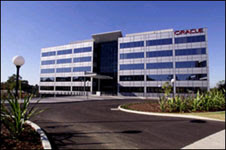
So, let's start with a tongue-in-cheek question.
What's the difference between a political leader (substitute you own relevant PM, president etc. here) and an ECM Solution?
The answer is of course, consistency! Most people vote for their political leadership on the basis that what they promise in their pre-election program is actually going to be stuck-to whilst they are in office. Of course, we all realise soon after election that the promises made previously are rarely upheld in full and quite often - are reversed entirely.
Organisations know that a database provides consistency in the storage of structured information. If you are running an application like Siebel or eBusinessSuite (SAP if you're mad, bad, loaded and have the palette for years of customisation) you rely upon the fact that a piece of information stored in a particular field will always be there - and other users in other parts of the world who use the same information will store their data in exactly the same way. Now, imagine for a minute that the applications used by an organisation stored the same data randomly in the database with a complex algorithm to be manually followed in order to locate the information. Imagine if this information concerned the number of customers ordering a piece of kit, or the financial records for the organisation - how long would it take the accounts department to balance the books at the end of the month or year if every record of income and expenditure had to be manually retrieved from a random storage system.
CRAZY????????????
Funnily enough, there are a lot of organisation out there (and you know who you are) that manage their unstructured information is exactly this way! These organisations wouldn't consider themselves mad but I would question their sanity any day of the week. You see, things are changing rapidly in the world of enterprise information. We've all seen the slides that state how much data is being created daily and how much of it lives within databases as opposed to on file-systems etc. The thing is, it's all true and guess what - the stats show that it's only going to get worse; a LOT worse.
Think about structured data as being an animal's skeleton and unstructured information being the muscle, skin, organs and flesh. With just a skeleton, you could probably build a structure resembling closely what the animal looked like. With everything else, you bring that animal to life and allow it to live. This is the same as any organisation. Without the management of unstructured data - all you have is a skeleton, the flesh that brings life (or context!) is lost or simply REALLY, REALLY hard to find.
Organisations are being challenged to better manage their unstructured data. Here in Australia, the Federal Court has released its practice note that pretty much tells organisations that they had better get their act together else heavy fines and potentially jail-time can be placed on the organisation and its directors. ECM solutions can be really simple to implement and use effectively by an organisation. You don't need the overkill and complexity that a solution like Documentum or FileNet brings - in fact, the majority of these organisations customers only use a tiny subset of their overall functionality offered. Oracle's Unified Content and Records Management solution provides a simple to use, easily configurable, non-intrusive environment for managing unstructured information. Along with the Universal Online Archive, Image and Process Management and Information Rights Management solutions - an organisation can cover just about any requirement they have for managing what constitutes around 85% (and growing!) of their entire organisations information-set.
We are ready to sort-out an organisations enterprise information management craziness with real-world solutions for real-world problems. Consistency comes from using an ECM solution correctly - embedding the business-rules around information storage that make the location and retrieval of unstructured data as easy as for structured information.
Paul

